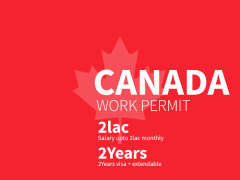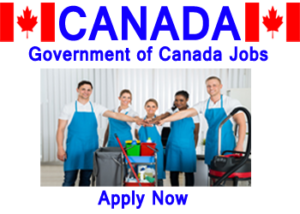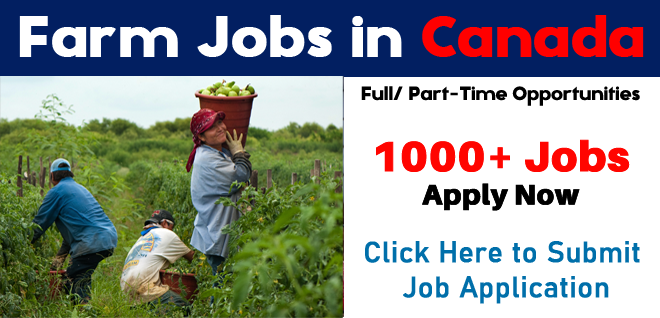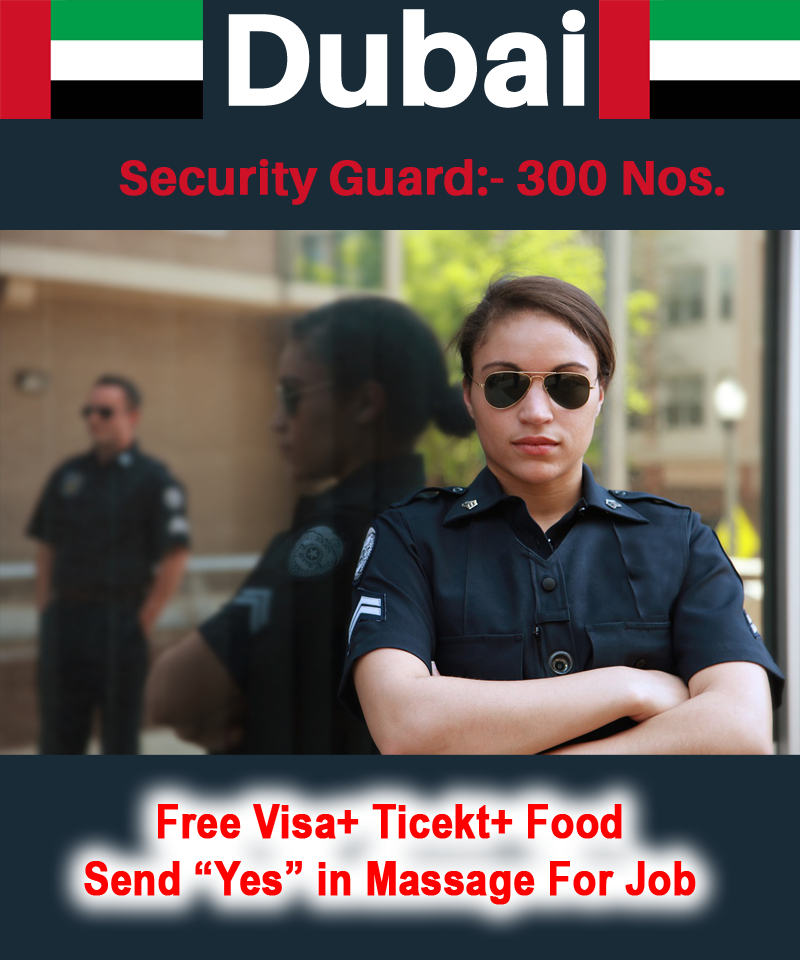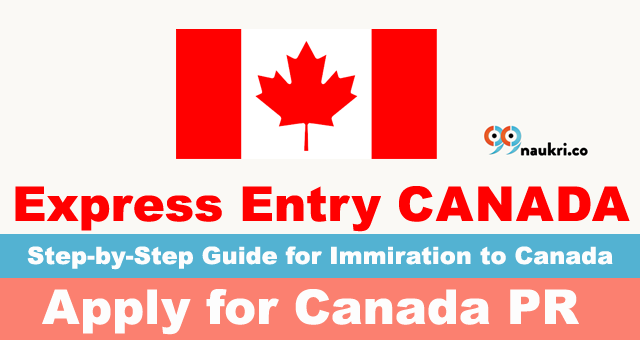How to Apply Working Visa in Canada
Introduction
Canada is renowned for its robust economy and diverse job opportunities, making it a highly sought-after destination for professionals and workers from around the globe. With a reputation for high standards of living, excellent healthcare, and a welcoming multicultural society, it’s no surprise that many individuals aspire to work in Canada. The country’s job market is known for its variety, catering to a wide range of industries from technology and finance to natural resources and healthcare. This diversity not only provides a wealth of opportunities for international workers but also contributes to Canada’s dynamic and innovative work environment.
However, for international individuals aiming to partake in these opportunities, obtaining a working visa is a crucial step. A working visa serves as a legal permission, allowing individuals to be employed in Canada for a specified period. This visa is not just a formality; it’s a necessary compliance with Canadian immigration laws. It ensures that foreign workers enter the job market without disrupting the balance for Canadian citizens and permanent residents. Moreover, it provides a structured framework that protects the rights of the international workers, ensuring they are employed under fair conditions, receive appropriate wages, and benefit from the protections offered by Canadian labor laws.
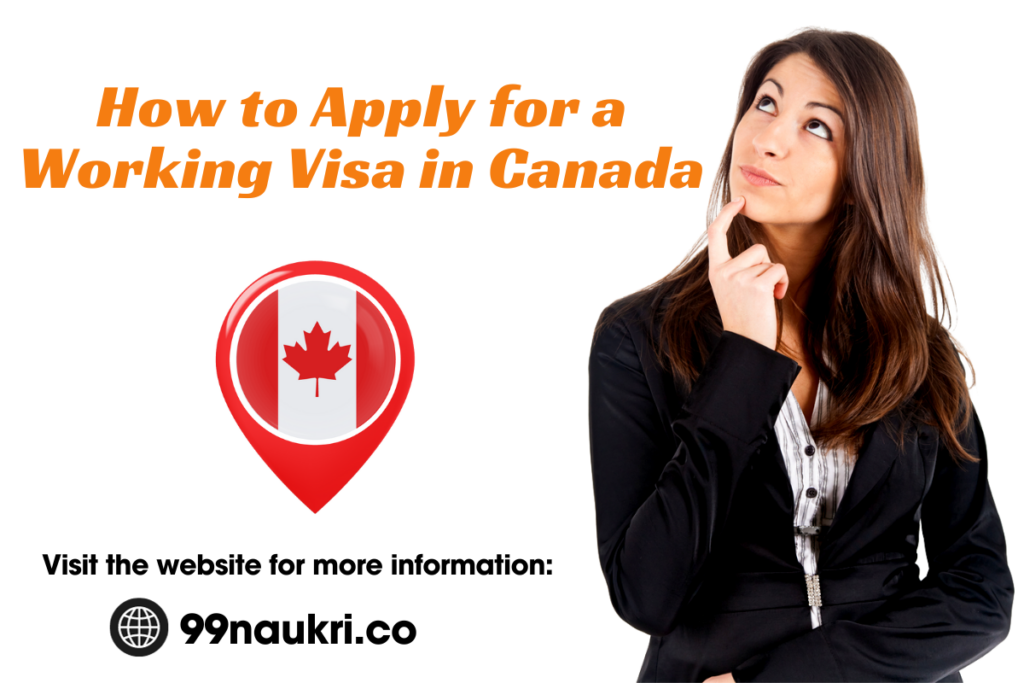
Eligibility Criteria
When considering applying for a working visa in Canada, understanding the eligibility criteria is crucial. These criteria ensure that individuals are suitably qualified and prepared for the Canadian job market, and they vary depending on the specific type of work visa.
Basic Requirements
- Valid Job Offer: One of the primary requirements for most work visas is a valid job offer from a Canadian employer. This offer must be genuine and typically needs to be backed by a Labour Market Impact Assessment (LMIA), which proves that no Canadian citizen or permanent resident is available to fill the role.
- Language Proficiency: Proficiency in English or French, Canada’s official languages, is essential. Applicants may need to provide results from a language test, like IELTS or TEF, as part of their application.
- Financial Resources: Applicants must demonstrate that they have enough funds to support themselves (and their dependents, if applicable) upon arrival in Canada.
- No Criminal Record: A clean criminal record is vital. Applicants may need to provide a police clearance certificate as part of their application.
- Medical Exam: A medical exam may be required to ensure the applicant does not pose a health risk to Canadian residents.
Specific Conditions for Different Types of Work Visas
- Temporary Workers Program (TWP): Aimed at skilled workers, the TWP requires applicants to have specific qualifications, experience, and a job offer in a skilled profession. The job offer must usually be supported by an LMIA.
- International Mobility Program (IMP): This program allows for certain workers to be exempt from the LMIA requirement. It’s suitable for individuals who can contribute significantly to Canada’s economy, culture, or research landscape. This includes intra-company transferees and participants of international agreements like NAFTA.
- Seasonal Agricultural Worker Program (SAWP): Specifically for seasonal work in the agricultural sector, this program requires applicants to be from certain participating countries and to return home after their work period is over.
- Caregivers Program: For individuals who will provide care for children, the elderly, or those with medical needs. Applicants must meet specific qualifications and have a job offer in Canada as a caregiver.
- Global Talent Stream: Part of the TWP, this stream is designed for highly skilled workers in high-demand occupations, particularly in the tech sector. It features expedited processing times.
Types of Canadian Work Visas
Canada offers various types of work visas, each designed to cater to different needs and circumstances of foreign workers. Three significant programs are the Temporary Workers Program, the International Mobility Program, and the Seasonal Agricultural Worker Program. Understanding the specifics of each can help applicants choose the most suitable option for their situation.
- Temporary Workers Program (TWP)The Temporary Workers Program is designed for skilled workers from abroad who are seeking temporary employment in Canada. This program often requires the employer to obtain a Labour Market Impact Assessment (LMIA), demonstrating that there is a need for a foreign worker to fill the job and that no Canadian worker is available to do the job.Key aspects:
- Skilled Work: Applicants usually need to have specific qualifications or skills in their field.
- Duration: The work permit under TWP is usually valid for the length of the job offer, up to a maximum of four years.
- Renewability: These permits can sometimes be renewed, but there are limits on the total length of stay.
- International Mobility Program (IMP)The IMP allows employers to hire foreign workers without needing an LMIA. This program is used to advance Canada’s broad economic and cultural interests.Key aspects:
- LMIA Exemption: This program benefits sectors where the entry of international workers will have a positive impact on Canadian interests.
- Categories: It includes categories like the North American Free Trade Agreement (NAFTA), intra-company transferees, and people taking part in exchange programs like International Experience Canada.
- Work Experience: Depending on the category, some require significant work experience or specialized knowledge.
- Seasonal Agricultural Worker Program (SAWP)The SAWP is specifically for workers from certain countries who will be employed in Canada’s agricultural sector on a seasonal basis.Key aspects:
- Country-Specific: Only citizens from certain countries, with which Canada has bilateral agreements, are eligible.
- Seasonal Employment: The work is seasonal, meaning workers will return to their home countries at the end of the season.
- LMIA Required: Employers must obtain an LMIA, showing that no Canadian worker is available for the job.
Application Process for a Canadian Work Visa
Applying for a Canadian work visa involves a detailed process. Following a step-by-step guide and preparing the necessary documentation is crucial for a successful application. Here’s an overview of the process: How to Apply Working Visa in Canada
Step-by-Step Guide
- Determine Eligibility: Before starting the application process, determine which type of work visa best suits your situation (Temporary Workers Program, International Mobility Program, or Seasonal Agricultural Worker Program).
- Job Offer: Obtain a valid job offer from a Canadian employer. For most work visas, this job offer must be supported by a Labour Market Impact Assessment (LMIA), except for certain categories under the International Mobility Program.
- Language Test (if required): Depending on your country of origin and the type of visa, you may need to take a language proficiency test in English or French.
- Gather Required Documents: Prepare essential documents, which typically include your passport, the job offer letter, LMIA (if applicable), proof of work experience, educational certificates, language test results, and proof of financial resources.
- Complete Application Forms: Fill out the necessary application forms for the specific work visa category. Ensure all information is accurate and complete.
- Pay Application Fees: Submit the required fees for processing your work visa application. These fees vary depending on the type of visa.
- Submit the Application: You can apply online or by paper. Online applications are usually processed more quickly.
- Biometrics and Medical Exam: Depending on your nationality and the type of visa, you may be required to provide biometrics (fingerprints and a photo) and undergo a medical exam.
- Wait for Processing: Processing times vary depending on the type of visa and other factors. You can track the status of your application online.
- Interview (if required): Some applicants may be called for an interview at their local Canadian embassy or consulate.
- Visa Approval: If your application is approved, you will receive a letter of introduction and, if necessary, a temporary resident visa to enter Canada.
- Prepare for Arrival in Canada: Plan your travel to Canada and understand your rights and responsibilities as a worker in Canada.
Necessary Documentation
- Passport: A valid passport that remains valid throughout your intended stay in Canada.
- Job Offer Letter: A letter from your Canadian employer.
- LMIA: Labour Market Impact Assessment document, if applicable.
- Proof of Work Experience: Documents like reference letters from previous employers.
- Educational Certificates: Diplomas, degrees, or certificates.
- Language Test Results: If required for your visa category.
- Proof of Financial Resources: To show you can support yourself and any accompanying family members.
- Application Forms: Properly filled out and signed.
- Application Fees Receipt: Proof of payment for the processing fee.
- Photographs: As per specification for the visa application.
- Medical Exam Results: If required.
- Biometrics: If applicable.
Preparing Your Application for a Canadian Work Visa
Preparing your application for a Canadian work visa is a meticulous process that involves gathering a range of documents and accurately completing application forms. This stage is critical in ensuring a smooth application process. How to Apply Working Visa in Canada
Gathering Documents
- Job Offer Letter: Obtain a detailed job offer letter from your Canadian employer. It should include information about your role, salary, and employment conditions.
- Labour Market Impact Assessment (LMIA): If required for your visa type, ensure you have a copy of the LMIA provided by your employer.
- Passport: Ensure your passport is valid for the duration of your intended stay in Canada. Some visa categories may require it to be valid for an additional period beyond your stay.
- Language Proficiency Test Results: If applicable, include the results of your English or French language proficiency tests (like IELTS or TEF).
- Educational Credentials: Gather your diplomas, degrees, certificates, or transcripts that validate your educational qualifications.
- Work Experience Documentation: Collect documents such as reference letters from previous employers, which detail your job responsibilities and duration of employment.
- Proof of Financial Resources: Prepare documents proving you have enough funds to support yourself (and dependents if applicable) in Canada. This could include bank statements, pay stubs, or a financial support letter.
- Photographs: Obtain passport-sized photographs as per the specifications required for the visa application.
- Medical Examination Certificate: If a medical exam is required, provide the certificate or report from an approved health professional.
- Police Clearance Certificate: If required, a police clearance certificate to prove you have no criminal record.
- Other Relevant Documents: Depending on your specific circumstances, you might need additional documents such as a marriage certificate or children’s birth certificates.
Completing Application Forms
- Choose the Correct Forms: Ensure you are filling out the correct application forms for the specific work visa category you are applying for.
- Read Instructions Carefully: Before filling out the forms, read all the instructions thoroughly to understand each requirement.
- Fill Out Accurately: Provide accurate and complete information. Double-check details like names, dates, and addresses.
- Attach Required Documents: Attach all the necessary documents as per the checklist provided in the application form. Make sure they are clear and legible.
- Sign and Date: Don’t forget to sign and date the forms where required. An unsigned form can lead to the rejection of your application.
- Review Everything: Once you have completed the forms and attached all documents, review everything carefully. Ensure no section is left incomplete and all information is consistent across documents.
- Consult the Checklist: Most visa application packages include a checklist. Use this to verify that you have included all required items.
Submitting the Application for a Canadian Work Visa
Once you have prepared your application for a Canadian work visa, the next step is to submit it. This can be done either online or through a paper application and involves paying the necessary application fees.
Online vs. Paper Applications
- Online Applications:
- Convenience: Online applications are generally faster and more convenient. They can be submitted from anywhere, as long as you have internet access.
- Document Upload: You’ll need to have digital copies (scanned or photographed) of all your documents. These should be clear and legible.
- Payment: Fees can be paid directly online using a credit or debit card.
- Faster Processing: Online submissions often have quicker processing times.
- Tracking: You can easily track the status of your application online.
- Paper Applications:
- Postal Submission: Paper applications are submitted through mail or courier service. This can be preferable if you have issues with online access or digital document submission.
- Original Documents: In some cases, you might need to provide original documents or certified copies.
- Payment: Payment for paper applications can be made through a variety of methods, including bank drafts or certified cheques.
- Mailing Time: Consider the mailing time as it adds to the overall processing duration.
- Physical Tracking: Tracking the status of paper applications is less straightforward and might require phone calls or emails.
Application Fees
- Work Permit Fee: A fee is required for the processing of your work visa application. The fee amount varies depending on the type of visa and the applicant’s nationality.
- Biometrics Fee: If you are required to give biometrics (fingerprints and a photograph), there is an additional fee.
- Additional Fees: In some cases, there may be extra fees, such as for medical examinations or police certificates.
- Payment Methods: Ensure that you use the accepted payment methods for your application. Online payments typically require a credit or debit card, while paper applications might use bank drafts, certified cheques, or other methods.
- Receipt: Keep a copy of the payment receipt, as you will need to include it with your application.
After Submission: Processing Times and Tracking Your Application
Once you have submitted your application for a Canadian work visa, the subsequent steps involve waiting for the processing and tracking of the status of your application.
Processing Times
- Variable Duration: Processing times for Canadian work visas can vary significantly depending on several factors such as the type of visa, the applicant’s country of origin, the volume of applications being processed, and the completeness and accuracy of the application submitted.
- Typical Timeframes: While it’s difficult to predict exact processing times, temporary work visas typically take a few weeks to a few months to process. Some specific streams, like the Global Talent Stream, may have shorter processing times.
- Updates to Processing Times: Immigration, Refugees and Citizenship Canada (IRCC) regularly updates processing times on their website. It’s advisable to check there for the most current information.
- Factors Affecting Times: Delays can occur due to incomplete applications, the need for additional documentation or an interview, or high volumes of applications during peak times.
Tracking Your Application
- Online Tracking: If you submitted your application online, you can track its status through the account you created on the IRCC website. This is the most straightforward way to stay informed about your application’s progress.
- Email and Correspondence: IRCC may also communicate updates through email. Ensure that the email address provided in your application is accurate and check it regularly for any correspondence.
- Paper Applications: For paper applications, tracking is less direct. You might receive updates via mail or email, depending on the contact information provided. In some cases, you can also track the application by contacting the Canadian embassy or consulate where you submitted your application.
- Client Application Status (CAS) Tool: The IRCC’s CAS tool can be used to track both online and paper applications. You’ll need your application number and details to access your status.
- Patience is Key: The waiting period can be a time of uncertainty, but it’s important to be patient. Regularly check for updates and avoid submitting multiple inquiries about the same application, as it could lead to further delays.
Interview and Biometrics in the Canadian Work Visa Application Process
After submitting your application for a Canadian work visa, you may be required to attend an interview and provide biometric information. These steps are crucial for verifying your identity and assessing your eligibility. How to Apply Working Visa in Canada
Scheduling an Interview
- Notification: If an interview is required, the Canadian visa office will notify you with details on how and when to schedule it. Not all applicants are called for an interview – it depends on the discretion of the visa office and the specifics of your application.
- Purpose: The interview gives the visa officer a chance to clarify details in your application, ask additional questions about your background, intentions in Canada, and your proposed employment.
- Preparation: It’s important to prepare for the interview. Gather all your documents, review your application, and be ready to answer questions about your job, employer, background, and reasons for wanting to work in Canada.
- Scheduling: Typically, you’ll be given instructions on how to schedule the interview, which may involve contacting the visa office or using an online system.
- Timeliness: Schedule your interview as soon as possible to avoid delays in processing your application. If you’re unable to attend the scheduled interview, notify the visa office immediately to reschedule.
Biometric Requirements
- What are Biometrics: Biometrics refers to the collection of fingerprints and a photograph. They are used for identity verification and are a standard part of the application process for most Canadian visas.
- Requirement Notification: You will be informed if you need to give biometrics with your application. As a general rule, most work visa applicants must provide biometrics.
- Scheduling Biometrics Appointment: Once you’ve paid the biometrics fee, you’ll receive a Biometric Instruction Letter (BIL) that will guide you on how to schedule your biometrics appointment. This is typically done through an authorized Visa Application Centre (VAC) or Application Support Center (ASC).
- Timely Submission: It’s important to provide your biometrics as soon as possible after receiving the BIL to avoid delays in your application. You usually have up to 30 days from the date of the letter to give your biometrics.
- Validity: Biometrics are generally valid for ten years, so if you have previously provided biometrics for a Canadian visa, you may not need to provide them again.
Approval and Receiving the Visa for Working in Canada
After completing the application process, interview, and biometric requirements for a Canadian work visa, the next stages involve receiving notification of approval and the actual visa issuance. Understanding these final steps is essential for a seamless transition to working in Canada.
Notification of Approval
- Communication from IRCC: If your application is successful, you will receive a notification from Immigration, Refugees and Citizenship Canada (IRCC). This communication often comes via the email or mailing address provided in your application.
- Confirmation of Approval: The approval notification typically includes a confirmation of your acceptance and details on the next steps. It does not mean your visa has been issued yet but indicates that your application has met the necessary criteria.
- Letter of Introduction: For work visa applicants, this notification often includes a Letter of Introduction (LOI). The LOI is not your work visa but is an important document that you must present upon arrival in Canada.
- Temporary Resident Visa (TRV): If you are from a country that requires a TRV to enter Canada, you will also receive this visa. It’s placed in your passport and shows that you are permitted to travel to Canada.
Visa Issuance and Validity
- Visa Stamping: If you receive a TRV, it will be stamped in your passport. This stamp indicates the validity of your permission to enter Canada.
- Validity Period: The validity of your work visa is usually tied to the length of your job offer, with a maximum initial stay of up to four years. The exact duration will be specified in your documents.
- Conditions: The visa will include specific conditions, such as the type of work you can do, the employer you can work for, and the location where you can work. It’s crucial to adhere to these conditions to maintain your legal status in Canada.
- Entering Canada: When you arrive in Canada, you will need to present your LOI and TRV (if applicable) to a Border Services Officer. They will then issue your actual work permit.
- Work Permit: The work permit is the official document that allows you to work legally in Canada. It is issued upon your arrival in Canada, after verifying your documents and LOI.
Arriving in Canada: Port of Entry Procedures and Compliance with Visa Terms
When you arrive in Canada with a work visa, you will go through specific procedures at the port of entry. Understanding these procedures and the importance of complying with the terms of your visa is crucial for a smooth transition into your new work environment in Canada.
Port of Entry Procedures
- Presentation of Documents: Upon arrival, you’ll need to present your passport, work visa, and Letter of Introduction (LOI) to the Canada Border Services Agency (CBSA) officer. If you have a Temporary Resident Visa (TRV), it should also be presented.
- Verification by CBSA Officer: The CBSA officer will verify your documents and may ask questions about your purpose of visit, the duration of your stay, and your place of employment in Canada. It’s important to answer these questions truthfully and clearly.
- Issuance of Work Permit: If everything is in order, the officer will issue your work permit. This document will specify the conditions of your work in Canada, including the type of work you are allowed to do, the employer you can work for, and the duration of your permit.
- Address in Canada: You may be asked to provide the address where you will be staying in Canada. It’s advisable to have this information handy.
Compliance with Visa Terms
- Adherence to Work Permit Conditions: Your work permit will have specific conditions related to your employment. It is crucial to adhere to these conditions, such as working for the specified employer and within the authorized time frame.
- No Unauthorized Work: Engaging in work not authorized by your work permit can lead to serious consequences, including the revocation of your work permit and possible deportation.
- Understanding Your Rights: Familiarize yourself with your rights as a worker in Canada, including fair wages, safe working conditions, and the right to be free from harassment and discrimination.
- Renewal and Changes: If you wish to extend your stay, change employers, or adjust the terms of your work permit, you must apply for a new permit or an amendment to your existing permit before your current one expires.
- Compliance with Canadian Laws: Besides work permit conditions, ensure you comply with all Canadian laws and regulations, including those related to taxes and healthcare.
Working in Canada
Working in Canada offers a unique experience due to its diverse workplace culture and well-established legal framework that protects both employees and employers. Familiarizing yourself with these aspects is key to a successful and fulfilling work life in Canada.
Workplace Culture
- Diversity and Inclusivity: Canadian workplaces are often characterized by their diversity. You’ll likely encounter colleagues from various cultural backgrounds, which contributes to an inclusive and multicultural work environment.
- Communication Style: Canadians are generally polite and value clear, concise, and respectful communication. Indirect communication and understatement are common, with an emphasis on maintaining harmony and avoiding confrontation.
- Work-Life Balance: Canada places a strong emphasis on a healthy work-life balance. Employers are typically understanding of family commitments and personal time.
- Punctuality and Productivity: Being punctual is highly valued in the Canadian work culture. There’s also an emphasis on productivity and professionalism in the workplace.
- Continuous Learning and Development: Many Canadian employers encourage ongoing professional development and may offer opportunities for training and skill enhancement.
Legal Rights and Responsibilities
- Work Permit Conditions: Adhere to the conditions of your work permit, including the type of job, employer, and location permitted by your visa.
- Employment Laws: Familiarize yourself with Canadian employment laws, which cover areas such as minimum wage, work hours, health and safety standards, and leave entitlements (like annual leave and parental leave).
- Non-Discrimination: Canadian law protects workers from discrimination based on factors like race, religion, gender, age, and sexual orientation. You have the right to work in an environment free from harassment and discrimination.
- Paying Taxes: As a worker in Canada, you are responsible for paying income tax. Your employer will deduct taxes from your paycheck, but you must file an annual tax return.
- Healthcare and Social Benefits: Understand your eligibility for healthcare services and social benefits. This varies depending on your immigration status and the province you work in.
- Adhering to Safety Regulations: Comply with all workplace health and safety regulations to ensure your safety and the safety of others.
- Reporting Requirements: If your situation changes (e.g., change in employer, loss of job), you may need to report these changes to Immigration, Refugees and Citizenship Canada (IRCC).
Extending or Changing Your Work Visa in Canada
If you are working in Canada and wish to extend your stay or change the conditions of your work visa, there are specific conditions and procedures you must follow. Understanding these is essential to ensure compliance with Canadian immigration laws.
Conditions and Procedures
- Eligibility for Extension: Your eligibility to extend your work visa depends on factors such as the type of visa you hold, the time you have already spent in Canada, and your current employment situation.
- Application Before Expiry: It is crucial to apply for an extension before your current work permit expires. The application should ideally be submitted at least 30 days before the expiry date.
- New Job Offer: If you’re changing employers or jobs, you need a new job offer and, in most cases, a new Labour Market Impact Assessment (LMIA) from your prospective employer.
- Compliance with Initial Terms: Ensure that you have complied with the terms of your initial work permit. Violations can affect your eligibility for extension or change.
- Status Maintenance: While your extension application is being processed, you can stay in Canada under the same conditions as your current work permit until a decision is made (known as implied status).
Renewal Process
- Gather Documentation: This includes your current work permit, new job offer (if applicable), new LMIA (if needed), and other relevant documents such as proof of your continued eligibility to work in Canada.
- Complete the Application: Fill out the application form for a work permit extension or change of conditions. Ensure all information is accurate and complete.
- Submit Online or by Mail: Applications can usually be submitted online through the Immigration, Refugees, and Citizenship Canada (IRCC) website or by mail. Online applications are often processed more quickly.
- Pay the Fees: There are fees associated with the work permit extension or change of conditions. Ensure these are paid as part of your application submission.
- Biometrics and Additional Information: You may be required to provide biometrics or additional information as part of your application.
- Processing Time: Be aware of processing times, which can vary based on several factors. You can check current processing times on the IRCC website.
- Notification of Decision: You will be notified by IRCC about the decision on your application. If approved, you will receive a new work permit specifying the terms of your employment.
Common Challenges and Solutions in Canadian Work Visa Applications
Applying for a Canadian work visa can be a complex process, and applicants often face challenges. Understanding these common issues and knowing how to address them can make the process smoother.
Addressing Application Issues
- Incomplete Applications: One of the most common issues is submitting an incomplete application. Ensure all required documents are attached and all forms are fully completed. Double-check the application against the provided checklist.
- Incorrect Information: Mistakes in the application can lead to delays or rejection. Verify all the details in your application, especially names, dates, and other personal information, for accuracy before submitting.
- Document Clarity: Poor quality or unclear copies of documents can be a problem. Provide clear, legible copies or scans of all required documents.
- Language Proficiency: Insufficient proof of language proficiency can be a hurdle. Ensure that you take the approved language tests and score adequately as per the requirements of your visa category.
- Job Offer Issues: Problems with the job offer, such as lack of an LMIA or an offer from a non-compliant employer, can impact your application. Verify that your job offer meets all the criteria set by Immigration, Refugees and Citizenship Canada (IRCC).
Dealing with Delays
- Check Processing Times: Be aware of the standard processing times for your visa category and plan accordingly. Processing times can vary depending on various factors.
- Application Tracking: Utilize the online tracking system provided by IRCC to check the status of your application. This can give you an idea of where your application stands in the process.
- Respond Promptly to Requests: If IRCC requests additional documents or information, respond as quickly as possible to avoid further delays.
- Contact IRCC for Updates: If your application is taking significantly longer than the usual processing times, you can contact IRCC for an update. However, do this sparingly to avoid clogging the system.
- Be Prepared for Biometrics and Interviews: Respond promptly to any requests for biometrics or interviews, as these are often time-sensitive and can cause delays if not completed quickly.
- Seek Professional Help: If you encounter significant challenges or your situation is complex, consider seeking assistance from an immigration lawyer or a registered immigration consultant.
- Stay Informed: Keep yourself updated on any changes in immigration policies or procedures that might affect your application.
Helpful Resources for Canadian Work Visa Applicants
Navigating the process of applying for a Canadian work visa can be complex. Fortunately, there are numerous resources available, including official websites, contacts, and community support networks that can provide valuable assistance and advice.
Official Websites and Contacts
- Immigration, Refugees and Citizenship Canada (IRCC):
- Website: www.canada.ca
- The primary source for up-to-date information on visas, including application forms, guides, and processing times.
- Canadian Embassies and Consulates:
- Contact the nearest Canadian embassy or consulate for specific inquiries or issues related to visa applications in your country.
- Find contact details at: www.international.gc.ca
- Job Bank:
- Website: www.jobbank.gc.ca
- A great resource for job seekers in Canada, providing information on job opportunities, job market trends, and employment conditions.
- Service Canada:
- Website: www.canada.ca
- Offers information on social and employment services and programs.
Community Support and Advice
- Immigrant Serving Organizations:
- These organizations provide support, counseling, and assistance to newcomers in Canada. They offer services like job search assistance, language classes, and legal advice.
- To find an organization: www.cic.gc.ca/
- Online Forums and Social Media:
- Online platforms like expat forums, social media groups, and websites are valuable for connecting with other immigrants who have undergone or are undergoing similar experiences.
- Platforms like CanadaVisa Forum and Reddit’s Immigration Canada subreddit can provide peer advice and shared experiences.
- Canadian Chambers of Commerce:
- Local Chambers of Commerce often provide networking opportunities, events, and information sessions that can be helpful for professional integration.
- Legal Aid and Immigration Consultants:
- For legal advice and assistance with your application, consider consulting a registered immigration consultant or accessing legal aid services.
- Settlement Agencies:
- These agencies provide various services to help immigrants settle in Canada. They can offer guidance on housing, education, and cultural adaptation.
Conclusion: Navigating the Canadian Work Visa Application Process
As we conclude this comprehensive guide on applying for a Canadian work visa, let’s recap the key points and share some final thoughts.
Recap of Key Points
- Eligibility and Types of Visas: Understand the eligibility criteria for the Canadian work visa and identify the type that best suits your situation, whether it’s the Temporary Workers Program, International Mobility Program, or Seasonal Agricultural Worker Program.
- Application Process: Prepare thoroughly by gathering all necessary documentation, completing application forms accurately, and submitting your application either online or via paper, along with the required fees.
- Post-Submission Steps: After submitting your application, track its progress and be prepared for potential interviews or biometrics appointments.
- Approval and Visa Issuance: On approval, you’ll receive a notification and, if applicable, a Temporary Resident Visa. The work permit itself is issued upon arrival in Canada.
- Arrival and Compliance: Upon arrival, adhere to the port of entry procedures and ensure compliance with the terms of your visa to maintain legal status in Canada.
- Workplace Integration: Familiarize yourself with Canadian workplace culture and your legal rights and responsibilities as an employee in Canada.
- Extending or Changing Your Visa: If needed, understand the process for extending or changing your work visa, and ensure you apply before your current permit expires.
- Overcoming Challenges: Be proactive in addressing common application challenges and seek help from official resources or community support when needed.
Final Thoughts
Embarking on the journey to work in Canada can be both exciting and challenging. The process requires diligence, attention to detail, and patience. While the path to securing a Canadian work visa involves several steps and adherence to specific regulations, the effort is often rewarded with the opportunity to work in a country known for its strong economy, cultural diversity, and high quality of life.
Remember, the key to a successful application lies in thorough preparation, understanding the legal requirements, and staying informed throughout the process. Utilize the available resources, and don’t hesitate to seek assistance if you encounter difficulties.
FAQs: Canadian Work Visa
- What is the processing time for a Canadian work visa?
- The processing time for a Canadian work visa varies depending on several factors, such as the type of visa, the applicant’s country, and the completeness of the application. Generally, it can range from a few weeks to several months. You can check current processing times on the Immigration, Refugees and Citizenship Canada (IRCC) website.
- Can I bring my family with me on a work visa?
- Yes, you can bring your family (spouse or common-law partner and dependent children) with you to Canada on a work visa. Your family members may need to apply for their own visas, such as an open work permit for your spouse or study permits for school-aged children. Their eligibility and the type of visa will depend on your own work visa terms.
- What happens if my work visa application is denied?
- If your Canadian work visa application is denied, you will receive a letter from IRCC explaining the reasons for the refusal. You can address these reasons in a new application or, in some cases, appeal the decision. It’s important to understand the refusal reasons thoroughly before reapplying or appealing.
- Is it possible to convert a work visa into permanent residency?
- Yes, it is possible to convert a work visa into permanent residency in Canada under certain conditions. Several immigration programs, like the Canadian Experience Class within the Express Entry system, allow individuals with work experience in Canada to apply for permanent residency. The eligibility criteria for these programs vary and often depend on factors like the length of your work experience, job skill level, and language proficiency.
- Are there specific jobs that are more likely to get a work visa in Canada?
- Jobs in certain high-demand sectors or occupations may have a higher likelihood of leading to a work visa, particularly under programs like the Global Talent Stream. These often include jobs in technology, healthcare, engineering, and trades. The need for foreign workers in specific roles is often determined by labor market demands and shortages in Canada.
LMIA Approved Jobs in Canada
LMIA Jobs Cooking Jobs Toronto
LMIA Jobs Fruit Picker LMIA Foreign Worker Canada
IT Jobs in Canada for Foreigners



